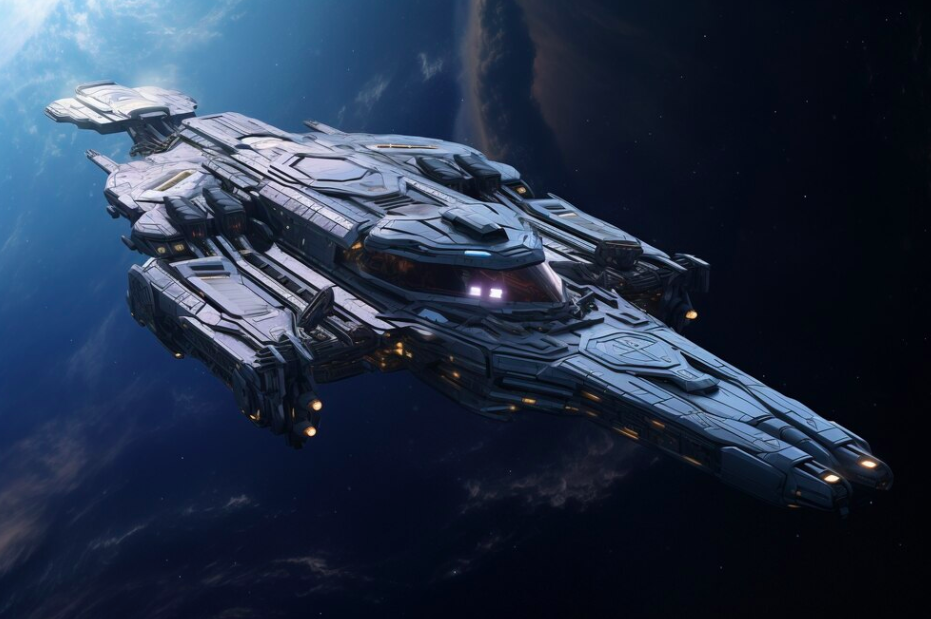Science Fiction Comes to Life: How Star Trek Predicted Future Technologies - Star Trek tech predictions

In the ever-evolving realm of science and technology, one remarkable source of inspiration has consistently captured the imagination of inventors, engineers, and visionaries alike: Star Trek. This iconic science fiction franchise, created by Gene Roddenberry, has transcended the boundaries of the small screen to leave an indelible mark on our real-world technological landscape. In this comprehensive exploration, we delve into the uncanny ability of Star Trek to predict future technologies, providing a fascinating glimpse into the parallels between fiction and reality.
The Communicator: A Blueprint for Modern Smartphones
Star Trek's Vision
Back in the 1960s, when "Star Trek: The Original Series" first aired, the handheld communication devices used by Captain Kirk and his crew were revolutionary. These compact gadgets, known as communicators, allowed instant voice communication over vast distances. Little did viewers know that these fictional devices would lay the groundwork for our modern smartphones.
The Reality
Today, our smartphones serve as multi-purpose communication tools, offering voice calls, text messaging, video chats, and more. The uncanny resemblance between these devices and Star Trek's communicators is undeniable. The show's visionary portrayal of handheld communication devices set the stage for the mobile revolution, connecting people worldwide.
graph LR
A[Star Trek Communicator] --> B[Modern Smartphones]
Warp Drive: Paving the Way for Faster-Than-Light Travel Concepts
Star Trek's Vision
One of Star Trek's most iconic concepts is the warp drive, which allowed starships to achieve faster-than-light travel. This fictional technology was instrumental in the show's ability to explore distant galaxies and encounter alien civilizations.
The Reality
While we have not yet achieved warp drive as depicted in Star Trek, the concept has spurred scientific discussions and research into theoretical physics. Concepts like the Alcubierre drive and wormholes have emerged as potential avenues for faster-than-light travel, thanks in no small part to the imaginative groundwork laid by the show.
Tricorders: The Precursors to Modern Medical Devices
Star Trek's Vision
In Star Trek, the tricorder was the ultimate diagnostic tool. These handheld devices could scan, analyze, and provide comprehensive health assessments in seconds, making them invaluable in the field of medicine.
The Reality
Although we don't have tricorders per se, we've witnessed remarkable advancements in medical technology. Portable ultrasound devices, diagnostic apps, and wearable health monitors share parallels with Star Trek's tricorders. These innovations have transformed healthcare, allowing for faster and more accurate diagnoses.
graph LR
A[Star Trek Tricorder] --> B[Modern Medical Devices]
Replicators: From Fictional Food Synthesis to 3D Printing
Star Trek's Vision
In the Star Trek universe, replicators were capable of creating food, objects, and even clothing out of thin air. This revolutionary concept hinted at the possibilities of automated fabrication.
The Reality
While we're not quite at the level of instant food replication, 3D printing technology has made significant strides. 3D printers can create intricate objects, from prototypes to prosthetics, by layering materials. This innovation aligns with Star Trek's vision of advanced fabrication technology.
graph LR
A[Star Trek Replicator] --> B[3D Printing]
Artificial Intelligence: Echoes of the Star Trek Computer
Star Trek's Vision
The Star Trek computer, often addressed as "Computer," was an artificial intelligence (AI) system that responded to voice commands and provided information instantaneously. This concept laid the foundation for our modern virtual assistants.
The Reality
Today, we interact with AI systems like Siri, Alexa, and Google Assistant, which can answer questions, control smart devices, and perform a multitude of tasks. These AI assistants draw inspiration from the seamless integration of technology and human interaction seen in Star Trek.
graph LR
A[Star Trek Computer] --> B[Modern AI Assistants]
Conclusion: A Testament to the Power of Imagination
In the grand tapestry of human innovation, Star Trek has proven to be a beacon of inspiration. Its ability to foresee and influence technological progress is nothing short of remarkable. As we continue to advance, we owe a debt of gratitude to Gene Roddenberry's visionary storytelling, which transcended the boundaries of fiction to shape our reality.
In the world of SEO, understanding the cultural impact of visionary creations like Star Trek is crucial. By crafting content that celebrates these connections between fiction and reality, we can engage audiences, inspire curiosity, and, in doing so, secure a prominent position in the ever-competitive digital landscape. Star Trek's technological prophecies have become a part of our collective consciousness, and by sharing this knowledge, we ensure that its legacy endures in the annals of both science fiction and real-world progress.


